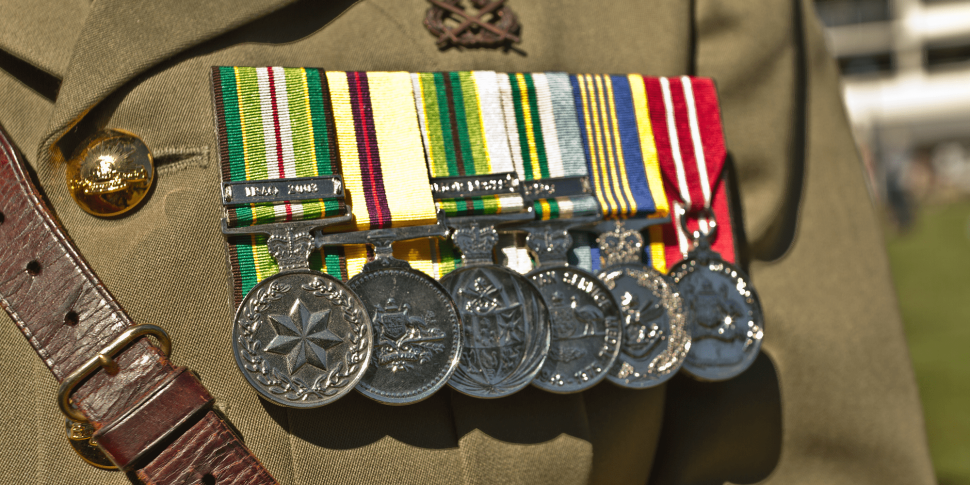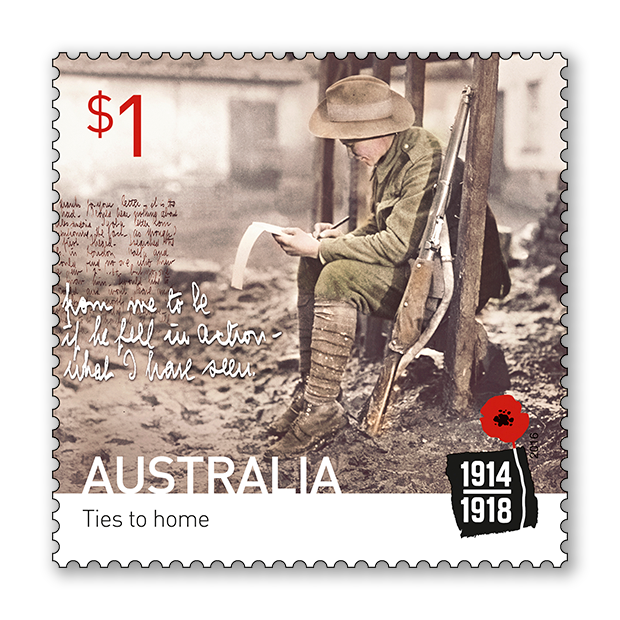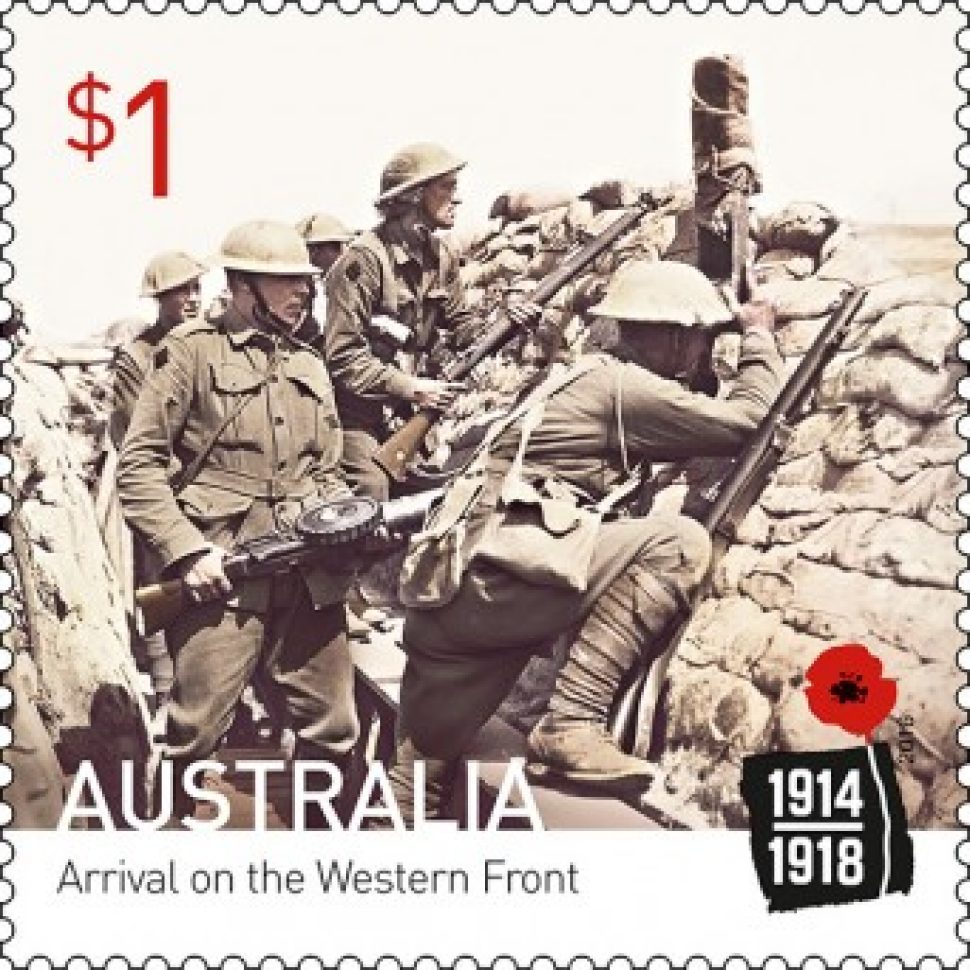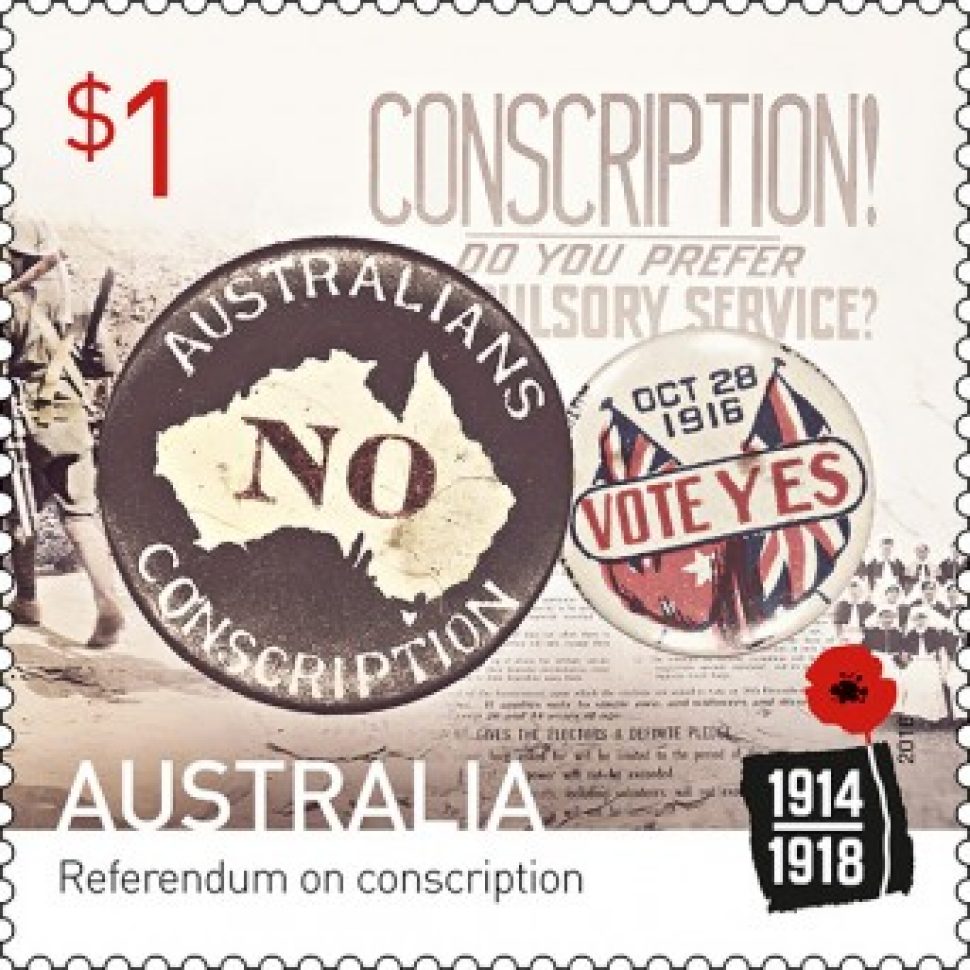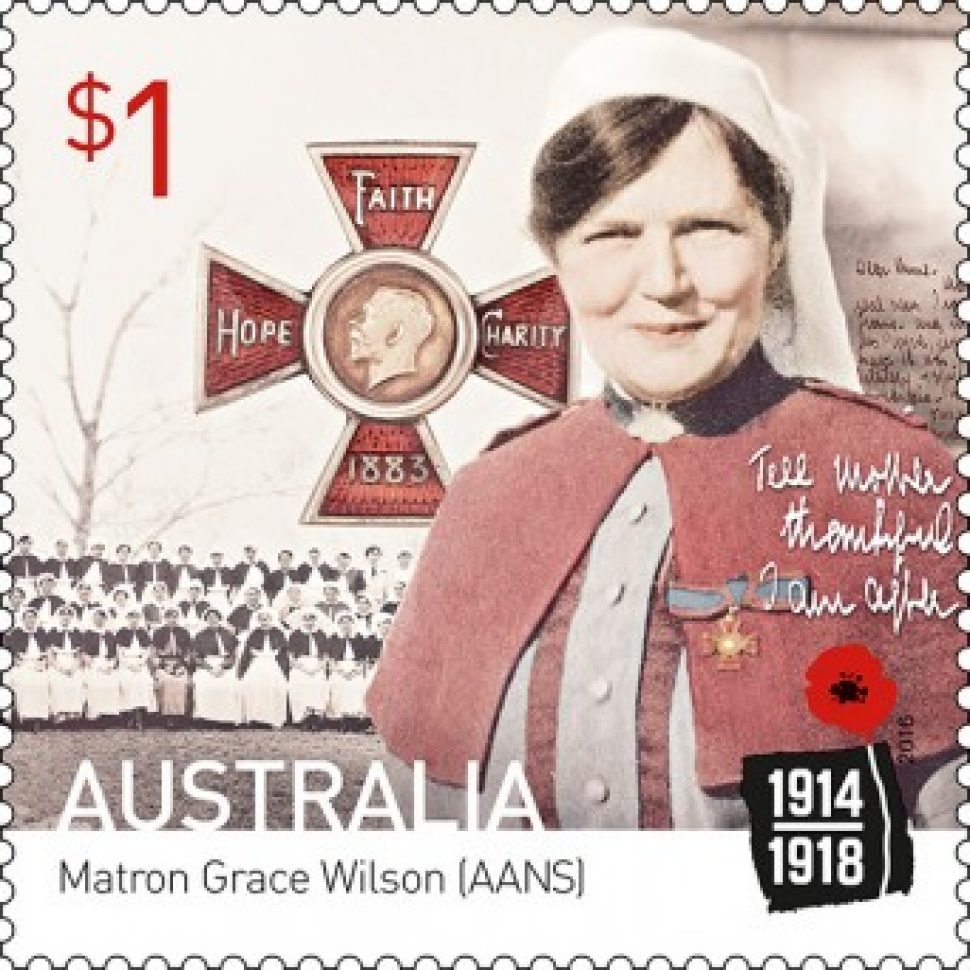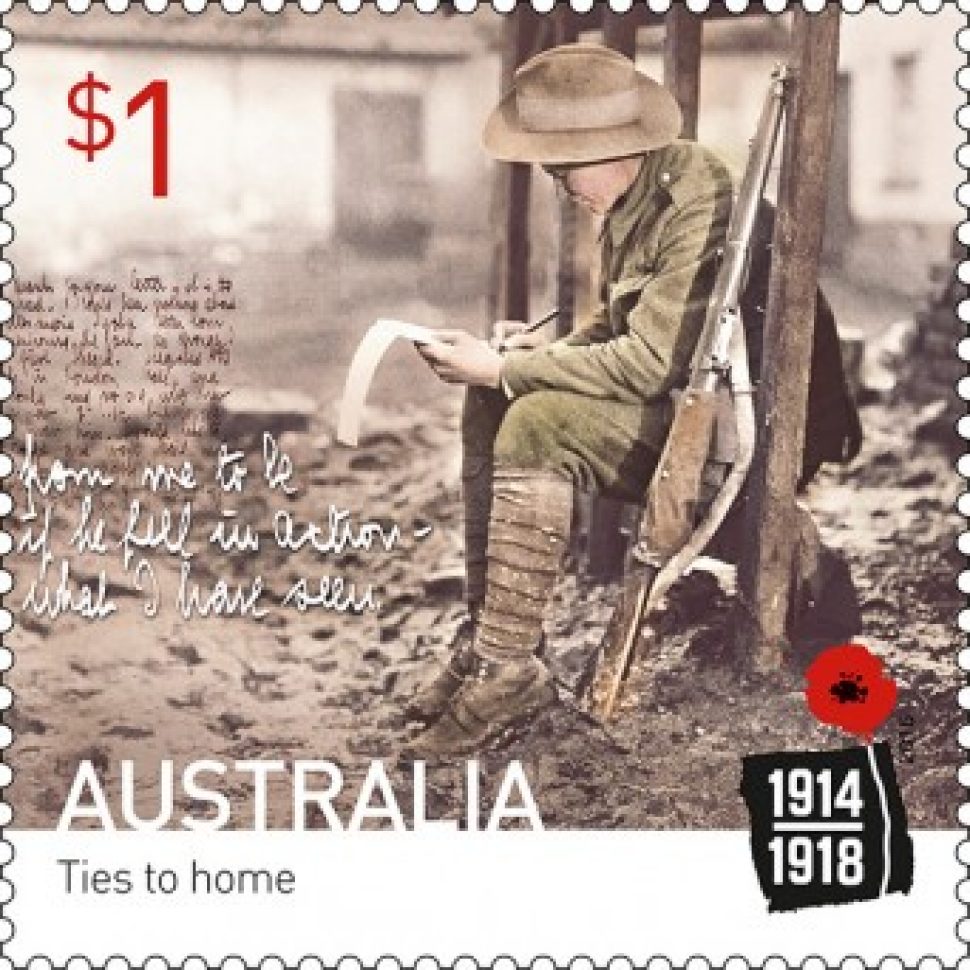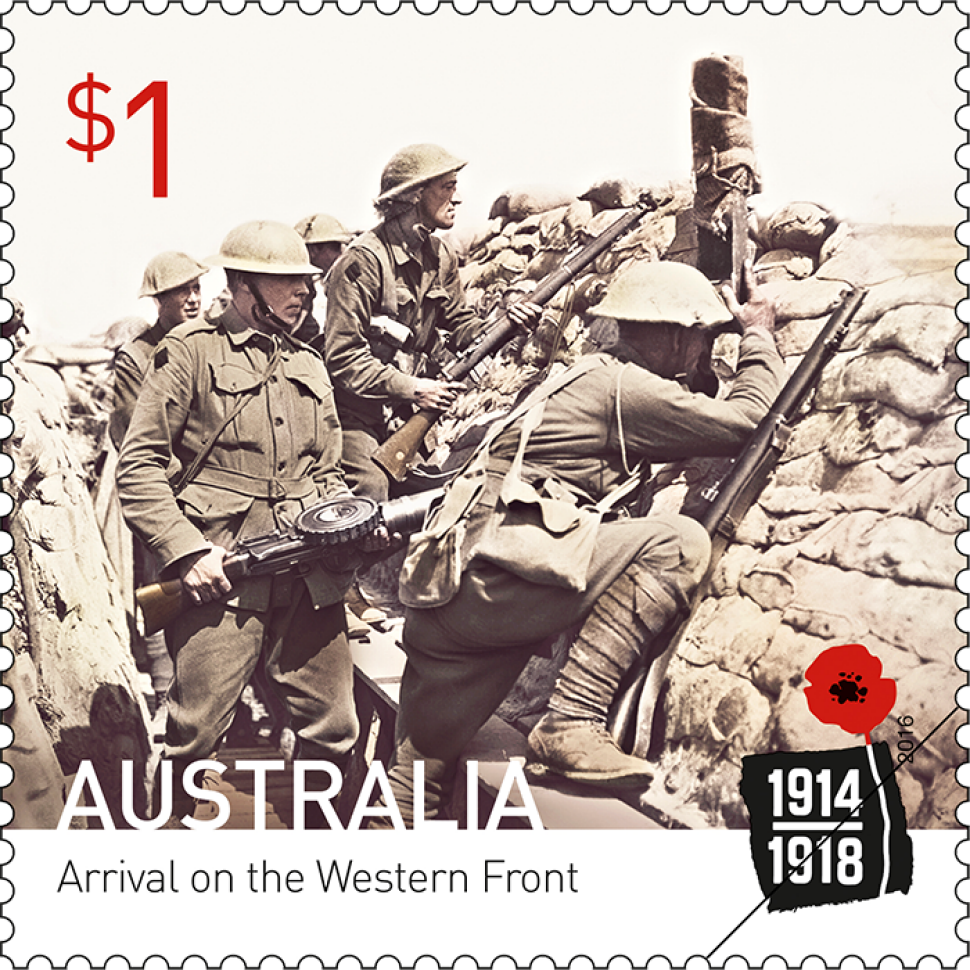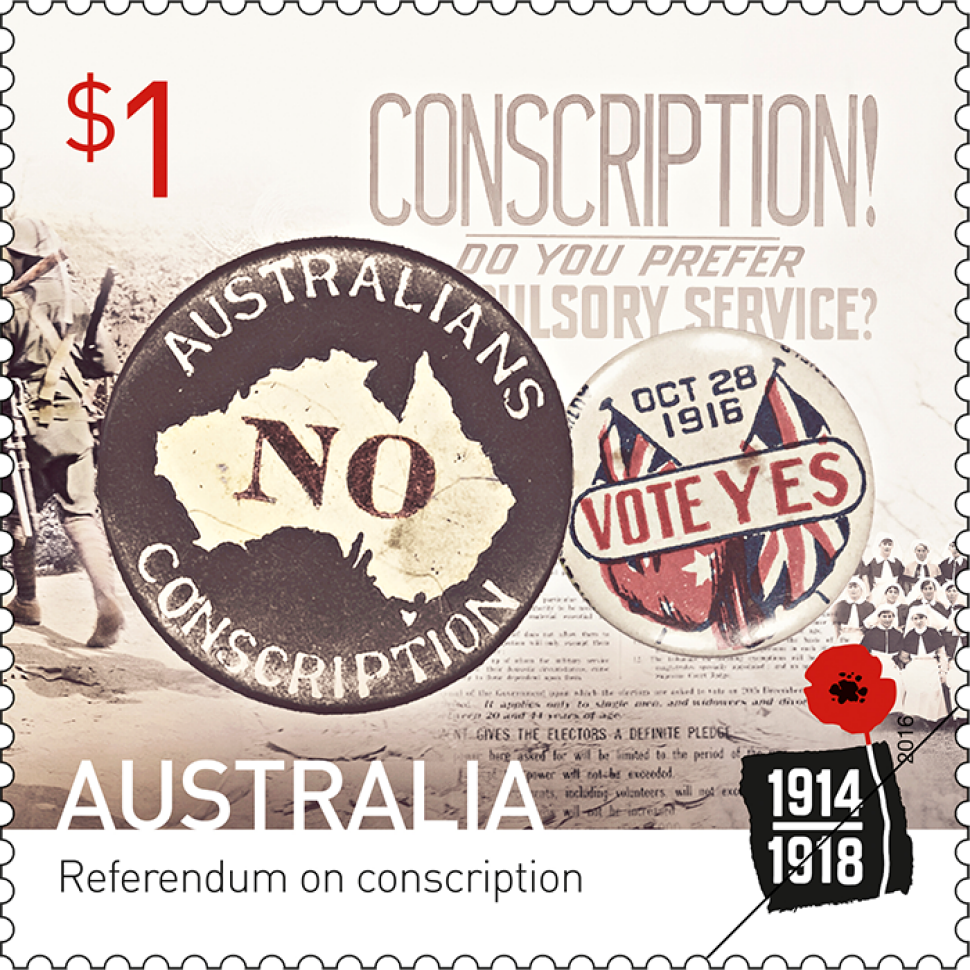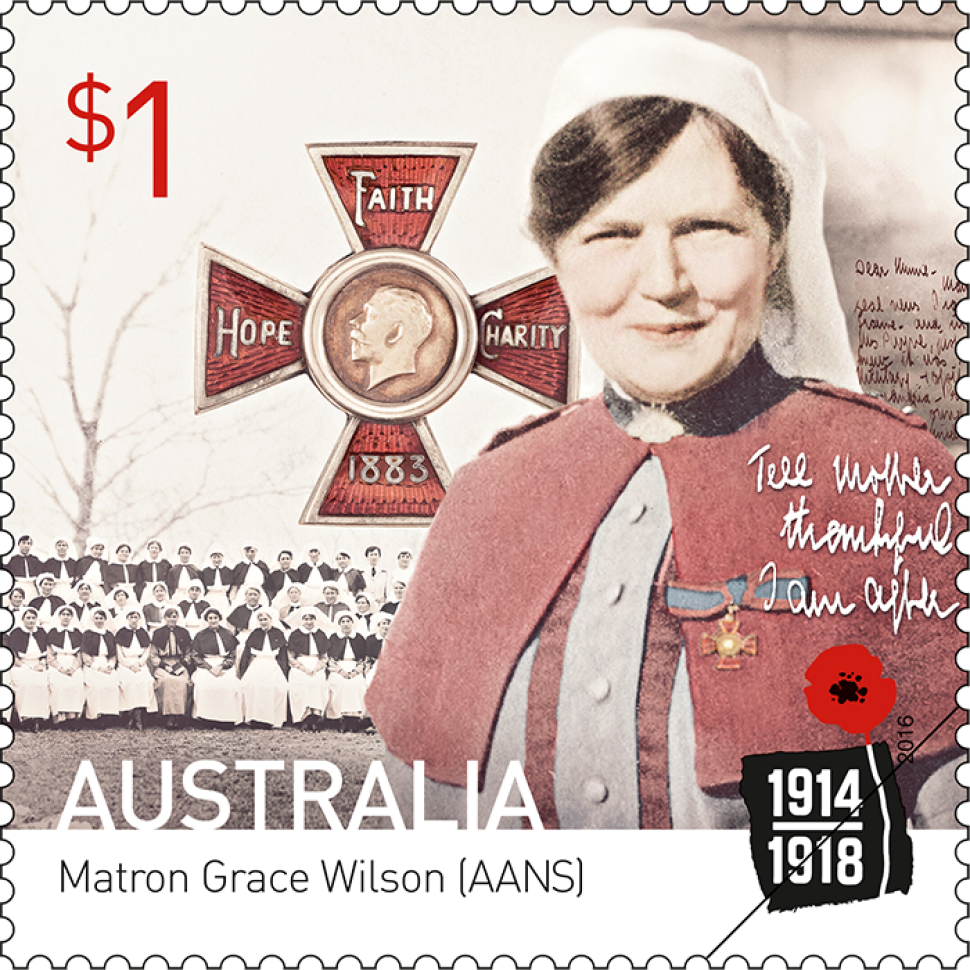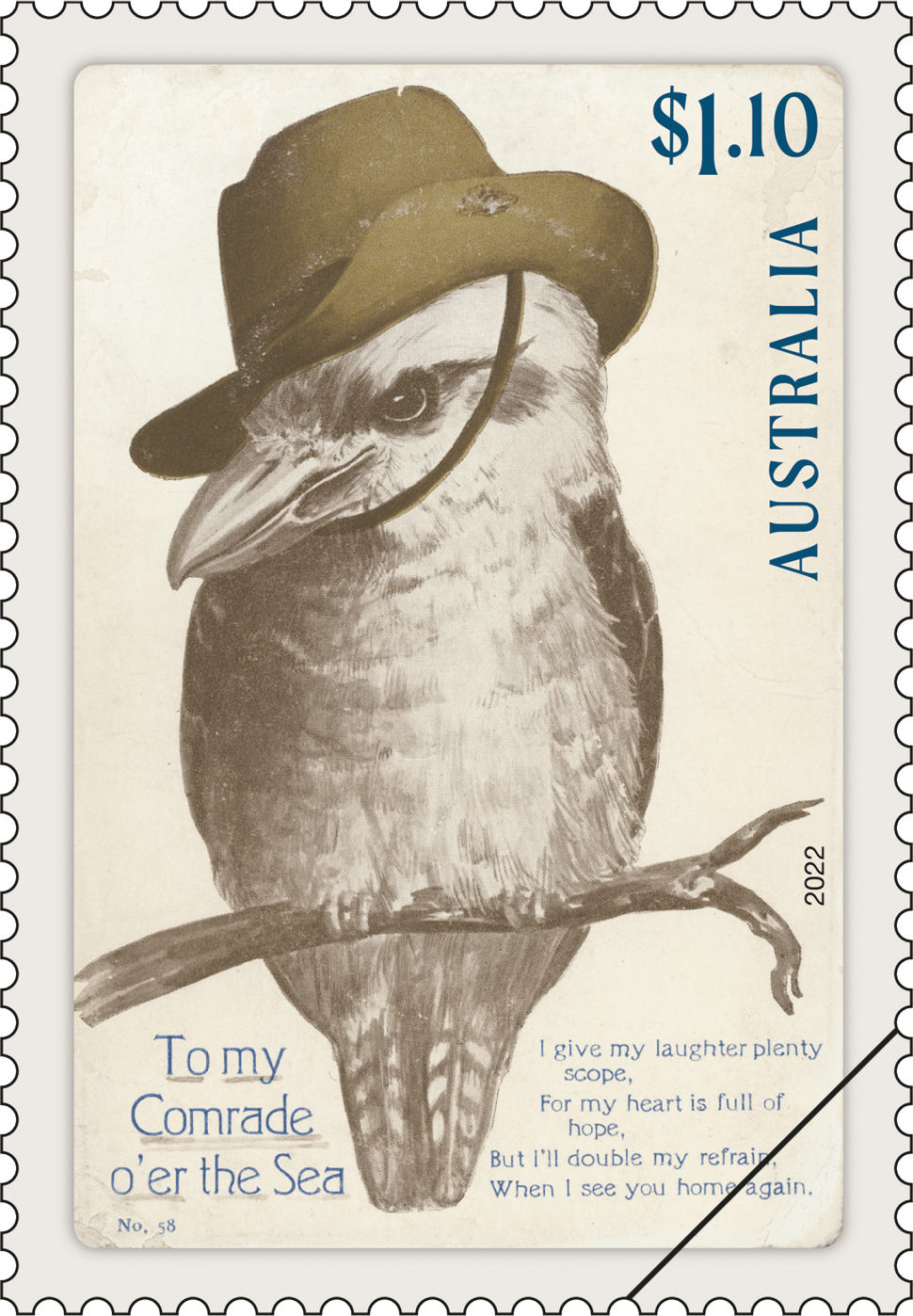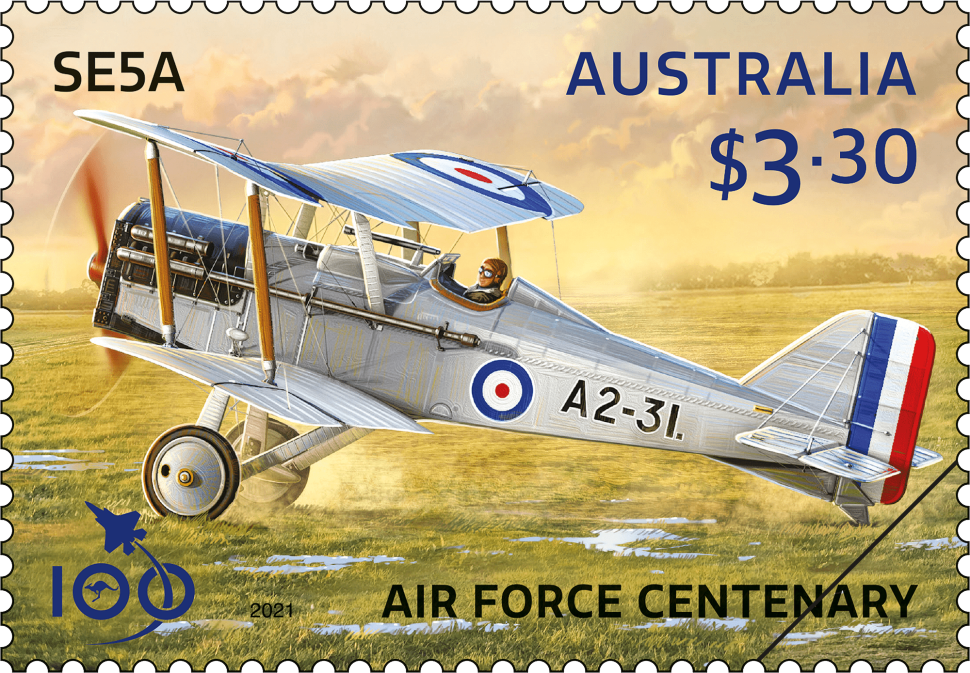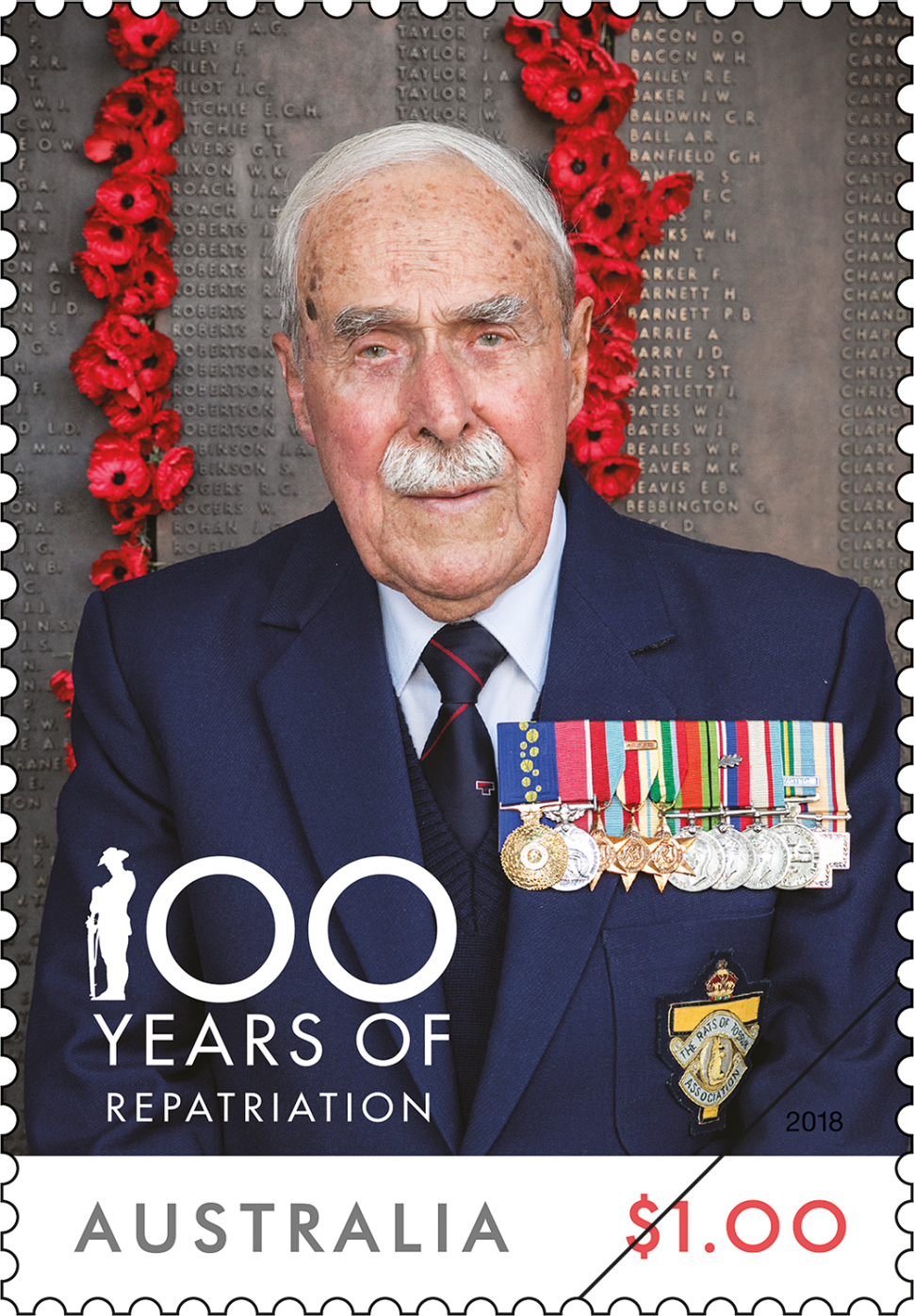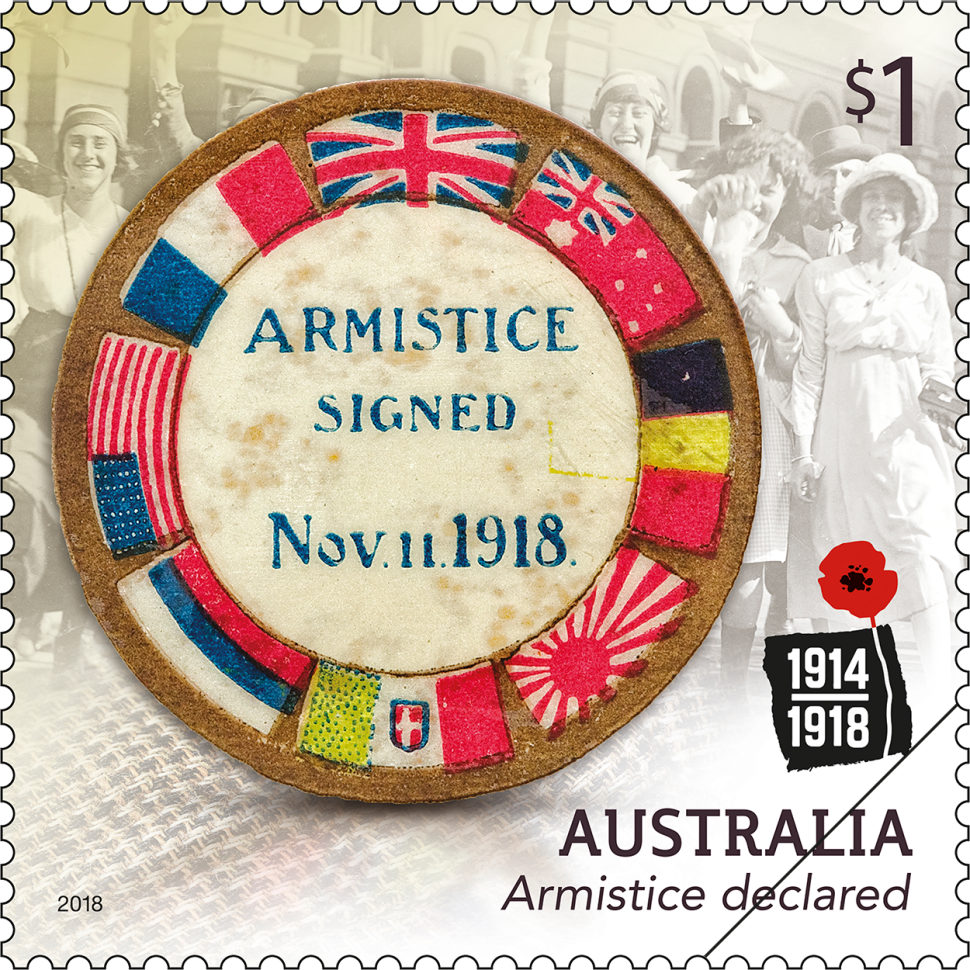The Centenary of WWI: 1916 stamp issue, released on 12 April 2016, brings us to the point in the war when the Anzacs travelled to the Western Front.
In November 2015, we looked at the research and process behind commemorating such a momentous occasion as the centenary of World War I (The centenary of World War I on stamps). That post outlined the key themes that tie each chronological stamp issue together within the series: a key event, a key conflict, an issue on the home front, an individual and a general ‘catch-all’ theme.
The stamps in this latest issue portray the Australian troops’ arrival at the Western Front (the event), the Somme offensive (the conflict), Matron Grace Wilson of the Australian Army Nursing Service (the individual) and the 1916 public vote on conscription (the home front). Postal connections with home makes for a poignant general theme.
The photographs used in the designs are from the collections of the Australian War Memorial, Museum Victoria and the Tasmanian Archive and Heritage Office. Designer Andrew Hogg has taken a contemporary approach that is sympathetic to the previous two issues in this series of five. He has very subtly coloured the images, so that across the series the palette shifts from back and white to colour. Although not se-tenant stamps, the five designs bleed into one another, creating a rich scene.
Designer
Andrew Hogg Design
Technical specifications
- Issue date
- 12 April 2016
- Issue withdrawal date
- 31 October 2016
- Denominations
- 5 x $1
- Stamp design
- Andrew Hogg Design
- Product design
- Jane Boschen, Boschen Design
- Printer - gummed
- McKellar
- Paper - gummed
- Tullis Russell Red Phos
- Paper - self-adhesive
- B100
- Printing process
- Offset lithography
- Stamp size
- 35mm x 35mm
- Minisheet size
- 170mm x 80mm
- Perforations
- 14.28 x 14.28
- Sheet layout
- Module of 50 with design x 5
- FDI postmark
- Frenchs Forest NSW 2086
- FDI withdrawal date
- 11 May 2016
Following some much needed rest in Egypt, to recover from Gallipoli, Australian troops set sail for Marseilles, France in March 1916. They joined British and French troops on the Western Front, which spanned 750 kilometres from the Belgian coast, through France, to the Swiss border.
This design shows Australian soldiers soon after their arrival on the Western Front. The photograph, taken on 3 June 1916, features members of the 2nd Australian Division on the Bois Grenier sector of the trench system.
When Australian troops arrived at the Western Front, they were introduced to trench warfare in the Armentières area before entering into major battles: Fromelles (which was a quick and crushing defeat) and soon after, Pozières and Mouquet Farm (which were hard-fought and significant victories).
These ill-judged conflicts claimed a huge number of Australian casualties. At Fromelles, Australians suffered some 5,533 casualties, of which 2,000 died. The twin battles of Pozières and Mouquet cost Australia around 23,000 men – killed, wounded or missing. Still more lives were lost due to the appalling conditions which caused trench foot, frostbite and exhaustion.
This design shows Australian machine gunners returning to their billets from the front line. They are members of either the 5th, 6th or 7th Machine Gun Companies, 2nd Australian Division, and most likely on a road near Pozières.
At home, news of massive frontline casualties saw enlistment numbers drop. Speeches, rallies and posters sought to convince eligible men to sign up voluntarily for military service. However, these efforts did not sufficiently boost recruitment numbers.
The first of two public votes on compulsory military service was held on 28 October 1916. Australians were asked:
Are you in favour of the Government having, in this grave emergency, the same compulsory powers over citizens in regard to requiring their military service, for the term of this War, outside the Commonwealth, as it now has in regard to military service within the Commonwealth?
Australians rejected the proposal by a slim majority. A second vote on 20 December 1917 (on a simplified version of the 1916 question) resulted in a more decisive rejection, and the issue of conscription was not revisited for the remainder of the war.
The issue of conscription was a divisive one, not only socially and religiously but also politically. The design incorporates photographs of voting buttons and a flier from the campaign.
Grace Wilson of the Australian Army Nursing Service was sent to Lemnos, as principal matron, in order to treat those wounded at Gallipoli. The hospital lacked basic facilities and yet managed to treat 900 patients.
On New Year’s Day 1916, Wilson was recommended for the Royal Red Cross, First Class for “distinguished service in the field”. This award was gazetted on 2 May.
She was also awarded three “Mentioned in Despatches” that year for her service, and a fourth time in 1918. She was appointed Commander of the Order of the British Empire (Military) on 1 January 1919 “for valuable services rendered in connection with military operations in France and Flanders”.
As well as a portrait of Grace Wilson, placed in front of a group of nurses, the stamp features the Red Cross Medal.
Soldiers keenly awaited news from the home front. Messages of love, family news, provisions and small luxuries were sent through the post. Each must have helped to ease the hardship of life on the Western Front. Likewise, those at home eagerly anticipated any news from their boys on the battlefield.
Taken in late November 1916, the powerful photograph featured in this stamp shows a soldier of the Australian 2nd Battalion writing a letter home from the French town of Flesselles, in the Somme. Visible are the notoriously horrendous, muddy conditions.
The Centenary of World War I: 1916 stamp issue is available from 12 April 2015 online, at participating Post Offices and via mail order on 1800 331 794, while stocks last.
This content was produced at the time of the stamp issue release date and will not be updated.
